In Unixlike operating systems, the chmod command is used to change the access mode of a file The name is an abbreviation of change mode Syntax chmod referenceoperatormode file The references are used to distinguish the users to whom the permissions apply ie they are list of letters that specifies whom to give permissions chmod This subchapter looks at chmod, a UNIX (and Linux) command chmod is used to change the permissions for a file or directory The chmod command was described in the first UNIX book, UNIX Programmer's Manual, by Ken Thompson and Dennis Ritchie, published wide open The chmod 777 filename command will set the permissions so This tutorial explains chmod command symbolic notation (r, w, x, a) and octal notation (0, 1, 2, 4) in detail with chmod command arguments and options Learn how chmod command is used to manage Linux permission levels (user, group and other) and types (read, write and execute) step by step with practical examples

File Permissions In Linux Unix Vk9 Security
Chmod command in unix for folder
Chmod command in unix for folder- Chmod is a very helpful command to change the file permissions of a file or a folder in any UNIXlike operating system Let's say you are currently in the root directory of your Unixlike system and you want to change the file permissions of a folder and all of the other files and subdirectories present inside that folder All you need to do Examples To Change group ownership In our case I am using group1 as a group in the system To change ownership we will use chown group1 file1txt You can see that the group permissions changed to group1 from root, if you use v option it will report that We just need to add a "" to change group




Understanding File Permissions What Does Chmod 777 Mean Make Tech Easier
In this file example, sets read and write permissions for user and group $ chmod ug=rw /var/www/html/dataphp See "how to use change user rights using chomod command" for more information Conclusion We explained the chown and chmod command forChmod references operator modes filename The references are shorthand (u, g, or o) for each class The operator determines whether to add (), remove () or explicitly set (=) the particular permissions The modes are read (r), write (w), or execute (x) $ chmod ux appsh Change File Mode For Group We can use g group before the plus in order to enable group execution right of the given file In this examples we will enable group execution of file appsh $ chmod gx appsh Change File Mode For Other Others is special group which covers all users in a Linux system
Linux chmod command example If you have ssh or telnet access to your server, just log in to your server, move to the directory where your file is located (using the cd command), and then run the Unix/Linux chmod command For instance, let's say you have a Perl script named runmecgi, and it's located in a directory named /web/sites/wwwexampleChmod x myfile Gives everyone execute permission on myfile chmod ugox myfile Same as the above command, but specifically specifies user, group and other In such cases, the chmod recursive option ( R or recursive) sets the permission for a directory (and the files it contains) The syntax for changing the file permission recursively is chmod R permission directory Therefore, to set the 755 permission for all files in the Example directory, you would type sudo chmod R 755 Example
Example 1 If you want to give read (4), write (2), and execute (1) permissions to both the user and group, and only read (4) permission to others, you can use localhost@user1$ chmod 774 Example 2 If you want to restrict write permissions to all others except the file's owner, you can use localhost@user1$ chmod 744To set the permission of a file, execute a permission statement with the chmod command For example, we want to set the read and write permission for all users and groups of file 'Demotxt' We have to pass the "u=rw,go=rw Demotxt" permission statement with chmod command To display the file permission, execute the below command These permissions read, write and execute permission for owner, group, and others Syntax (symbolic mode) chmod ugoa = mode file The first optional parameter indicates who – this can be (u)ser, (g)roup, (o)thers or (a)ll The second optional parameter indicates opcode – this can be for adding (), removing () or assigning (=) a permission




Javarevisited 10 Examples Of Chmod Command In Unix Linux
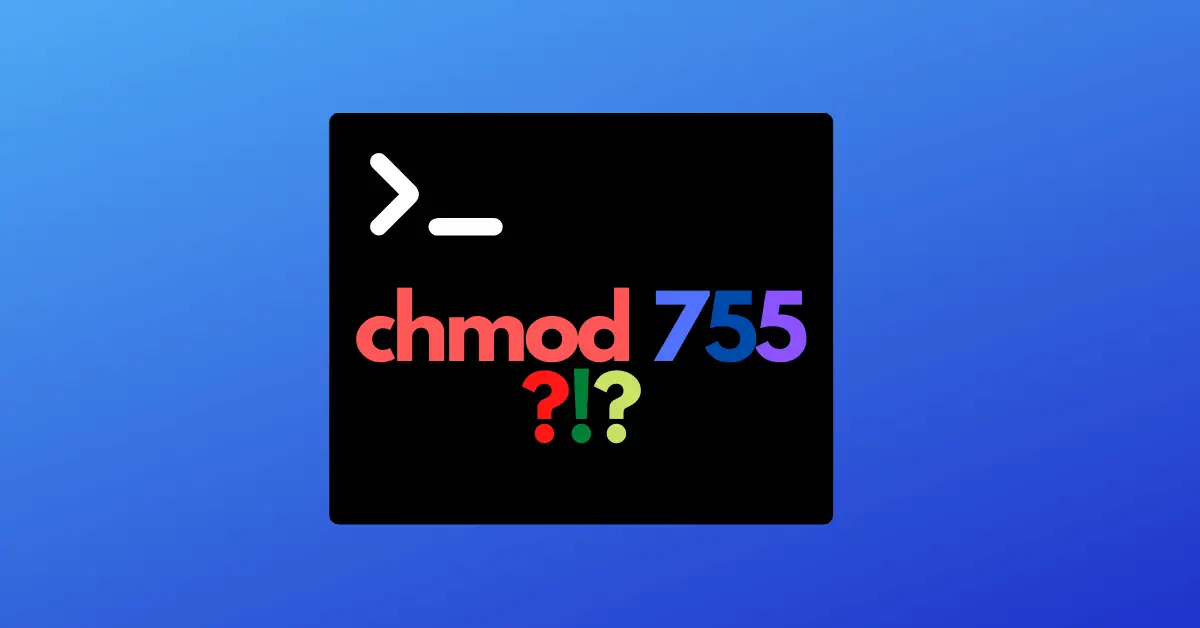



Chmod 755 Command What Does It Do Codefather
If you are new to Linux, and are looking for a way to change file/directory permissions through the command line, you'll be glad to know there exists a command dubbed chmod that lets you easily do this In this tutorial, we will discuss the basics of this command as well as provide examples explaining how it can be used in various scenariosRemove the execute permission for all users chmod ax filename; Also, as Anthon points out, the find command given in the other answer executes the chmod program once for each worldwritable file it finds It is slightly more efficient to say find toplevel_directory perm 2 type f exec chmod ow {} This executes chmod with many files at once, minimizing the number of execs PS
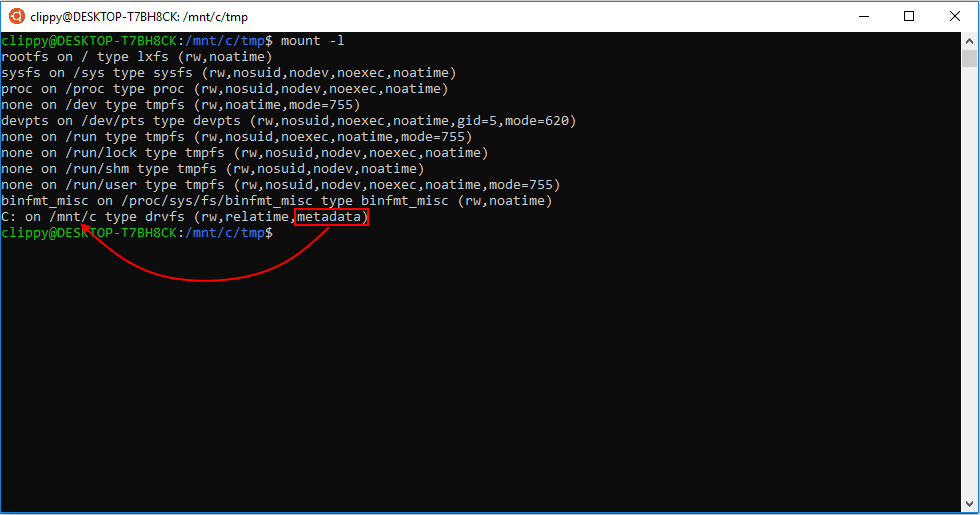



Chmod Chown Wsl Improvements Windows Command Line
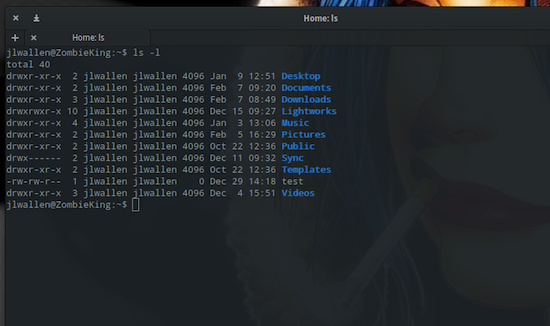



Getting To Know Linux File Permissions Linux Com
For example, to change the permissions of all files and subdirectories under the /var/www/html directory to 755 you would use chmod R 755 /var/www/html The mode can also be specified using the symbolic method chmod R u=rwx,go=rx /var/www/html Only root, the file owner, or user with sudo privileges can change the permissions of a file Be extra careful when Unix/Linux has users and user groups that can be assigned for file access the options gs are as follows g the permissions that other users in the file's group have for it s set user or group ID on execution here is a sample usage chmod =rwx,gs filename (allow everyone to read, write, and execute a particular file and turn on theChmod syntax for symbolic values chmod OPTION MODE1,MODE2 FILE 3 chmod optionsR – Recursively change the permissions in the file under the directory chmod examples using octal mode First column shows the chmod command , second column shows how the value is calculated for the permission




Is There A Web Based Converter Between Rwx And The Octal Version Unix Linux Stack Exchange




This Chmod Calculator Makes Creating Chmod Commands A Cakewalk Hongkiat
Chmod changes the permissions of each given file according to mode, which can be either an octal number representing the bit pattern for the new permissions or a symbolic representation of changes to make, (= rwxXstugoa) Numeric (absolute) mode From one to four octal digits Any omitted digits are assumed to be leading zeros ls l new_ filetxt We want the user dave to have read and write permissions and the group and other users to have read permissions only We can do using the following command chmod u=rw,og=r new_filetxt Using the "=" operator means we wipe out any existing permissions and then set the ones specifiedTo have combination of permissions, add required numbers For example, for read and write permission, it is 42 = 6 3 chmod Examples Give read, write and execute to everybody (user, group, and others) read, write and execute = 4 2 1 = 7 $ chmod 777 filetxt (or) $ chmod ugorwx filetxt Give execute privilege to user



Q Tbn And9gcs Trmaopb41lzfo2wl Mi6olorurkywaddbudhnw Ne1mor3ct Usqp Cau
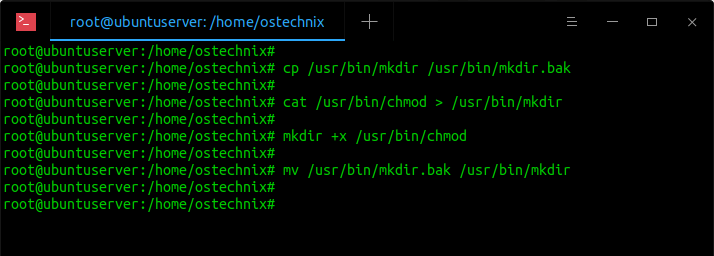



Restore Executable Permission To Chmod Command In Linux Ostechnix
Chmod special modes Setuid and setgid Setuid and setgid (short for 'set user ID upon execution' and 'set group ID upon execution', respectively) are Unix access rights flags that allow users to run an executable with the permissions of the executable's owner or group respectively and to change behaviour in directories Permissions Using Numeric modeThe format of a numeric mode is 'augo' ,A numeric mode is from one to four octal digits (07),to set permission you pass the numbers permission to owner group everyone for example chmod nnn is setting permission n to owner and the second n to group and third n to everyone (n is the numeric mode that we will describe bellow) code factory chmod command in linux unix with examples chmod linux command chmod unix command linux and unix commands google youtube quora stackoverflow geeksforgeeks




How To Copy File Permissions And Ownership To Another File In Linux
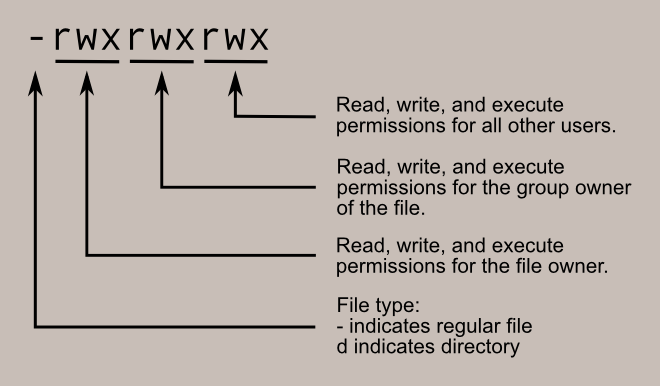



Learning The Shell Lesson 9 Permissions
The chmod Command The chmod (Change Mode) command lets you apply permissions to files chmod 777 So, running chmod 777 /path/to/file/or/folder will give the file or folders owner (user), group (users within the group), and others (everyone else on the system) full read, write and execute privileges chmod R 777 /path/to/file/or/folderView (u)ser, (g)roup and (o)thers permissions for chmod 754 (chmod arwx,gw,owx) or use free online chmod calculator to modify permissions easily The atoi() function only translates decimal, not octal For octal conversion, use strtol() (or, as Chris JesterYoung points out, strtoul() though the valid sizes of file permission modes for Unix all fit within 16 bits, and so will never produce a negative long anyway) with either 0 or 8 as the base Actually, in this context, specifying 8 is best It allows people to write 777 and




Linux File Permissions Tutorial How To View And Change Permission




File Permissions In Linux Unix Vk9 Security
So Linux providing various kind of file permission that accessed by user or group For effective security Linux providing two authorization levels 1 Ownership 2 Permission If you like to generate permission quickly, Here you have Chmod Unix Permissions Calculator Using this you can generate your Octal or Symbolic valueCHMOD command examples Chmod (change mode) is one of the most frequently used commands in unix or linux operating system The chmod command is used to change the file or directory access permissions To know about the access permissions of a file or directory, use the ls l command as shown belowRecursively remove the write permission for other users chmod R ow dirname



Understand Linux File Permissions Using Chmod And Chown Commands Programming Tips For Versatile Coders




Humour Archives Page 2 Of 4 Nixcraft
This example compiles a list of one or more symbolic mode expressions that can change a set of file permissions in a manner similar to the UNIX chmod command The symbolicmodelist parameter is a commaseparated list of expressions where each expression has the following form who operator permissions who One or more of the following characters u, g, o, or a, meaning 1026 If you are going for a console command it would be chmod R 777 /www/store The R (or recursive) options make it recursive Or if you want to make all the files in the current directory have all permissions type chmod R 777 / If you need more info about chmod command see File permission Share chmod x Add Execute Privilege For User The chmod x can be used to add execution privilege the current owner user of the specified file In the following example we will add execution privilege for the user ismail to the file named backupsh $ chmod ux backupsh Also, we can set multiple files executable easily by using glob operation




What Is Chmod X Command In Linux Linuxtect
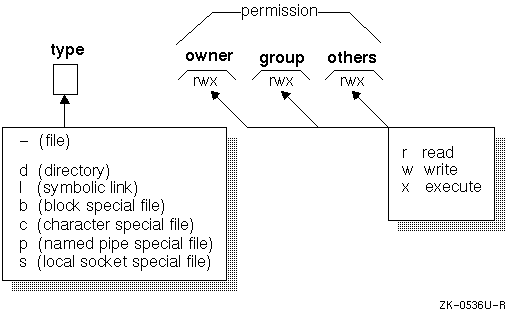



Unix Permissions
In Unix and Unixlike operating systems, chmod is the command and system call used to change the access permissions of file system objects (files and directories) sometimes known as modesIt is also used to change special mode flags such as setuid and setgid flags and a 'sticky' bitThe request is filtered by the umaskThe name is an abbreviation of change mode Examples Using chmod # Below are examples of making changes to permissions chmod ux myfile Gives the user execute permission on myfile; Chmod Examples in Linux / Unix 1 Give read, write and execute permissions to everyone Read, write and execute 421=7 $ chmod 777 samplesh In the above example, you can see that the permissions are specified with a three digit number The first digit is for user permissions, second is for group and third is for others permission




Changing File Permissions Wordpress Org




Command Line Understanding Chmod Symbolic Notation And Use Of Octal Ask Ubuntu
$ chmod R ux nmap Change Group Permission Generally, user permissions are changed by using the chmod command But also the group permissions can be changed by using the chmod command In the following example, we add write permission for the current group of the file $ chmod R gw nmap Change All (User, Group, Other) Permission Below are some examples of how to use the chmod command in symbolic mode Give the members of the group permission to read the file, but not to write and execute it chmod g=r filename;



Q Tbn And9gcs Trmaopb41lzfo2wl Mi6olorurkywaddbudhnw Ne1mor3ct Usqp Cau




Permissions In Linux Geeksforgeeks
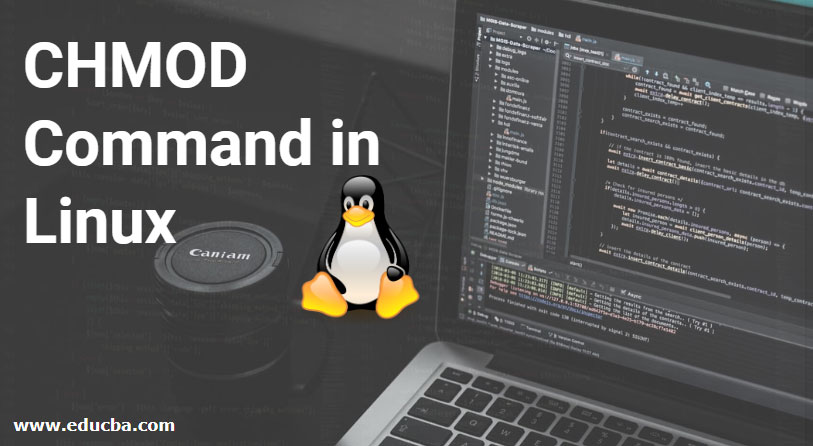



Chmod Command In Linux Operators Used In Chmod Command In Linux




What Did We Do When We Were Chmod 777 Develop Paper




Unix File Permissions What Is Chmod Command In Unix




Chmod 777 Tutorial The Electric Toolbox Blog




What Is The Meaning Of Chmod 755 And How To Execute And Verify It



Using Chmod X Command On Linux And Unix With Examples Systemconf




How To Use Chmod And Chown Command In Linux Nixcraft




Chmod 777 In Terminal The Command To Make All Changes Affect Every File And Folder Ask Ubuntu
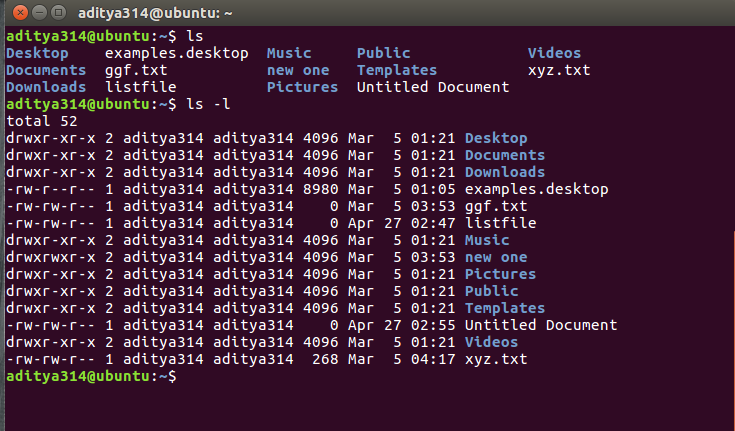



Permissions In Linux Geeksforgeeks




How To Use Chmod Command In Linux Explained With Examples




Chmod Command In Linux With Examples Geeksforgeeks




Understanding File Permissions What Does Chmod 777 Mean Make Tech Easier




Windows Chmod 600 Stack Overflow




Linux Chmod How To Make A Perl Script Executable Alvinalexander Com



Using The Chmod Command To Change File Permissions On A Unix Linux System Securitron Linux Blog




How To Use Chmod Command In Linux Explained With Examples



Chmod Command In Unix Learn Unix Online Fresh2refresh Com




Linux Terminal File Permissions Chmod Chown And Chgrp Youtube



1




Chmod Umask Stat Fileperms And File Permissions



1




Command Line Understanding Chmod Symbolic Notation And Use Of Octal Ask Ubuntu
.png)



File Permissions In Linux Unix How To Read Write Change




Command Line What Is The Main Difference Between Chmod And Chown Ask Ubuntu




How To Use The Chmod Command On Linux




Understanding File Permissions What Does Chmod 777 Mean Make Tech Easier




File Permissions In Linux Unix Vk9 Security



Github Fed Command Line Cheatsheet Unix Command Line Cheatsheet




Linux Chmod Chown Syntax And Chmod Chown Examples



Common Bash Commands




Chmod Chown Wsl Improvements Windows Command Line




Why Do I Get Permission Denied When Using Mv Although Directory Rights Are Correct Unix Linux Stack Exchange




ल नक स म Chmod कम ड क य ह Computer Hindi Notes




Linux Commands Chmod




Chmod Command In Linux With Examples Geeksforgeeks




What Is The Meaning Of Chmod 755 And How To Execute And Verify It




Explain Chmod Command In Unix
.png)



File Permissions In Linux Unix How To Read Write Change




Ppt Agenda Powerpoint Presentation Free Download Id




Linux File Permissions Chmod Umask Tutonics
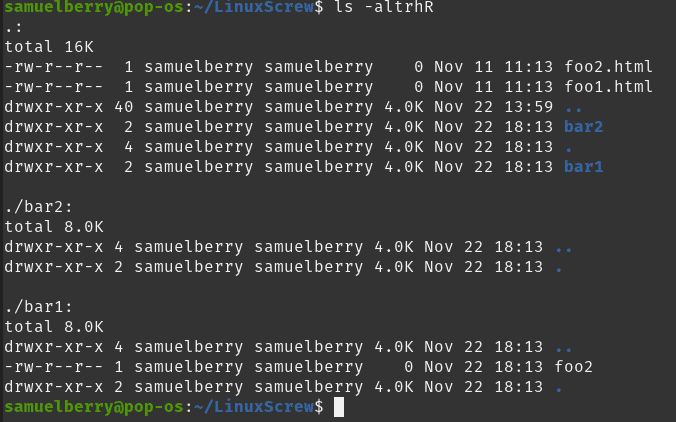



Linux Chmod Recursive How To Change File Permissions Recursively




What Is Chmod 777 How To Change File Permissions For Linux
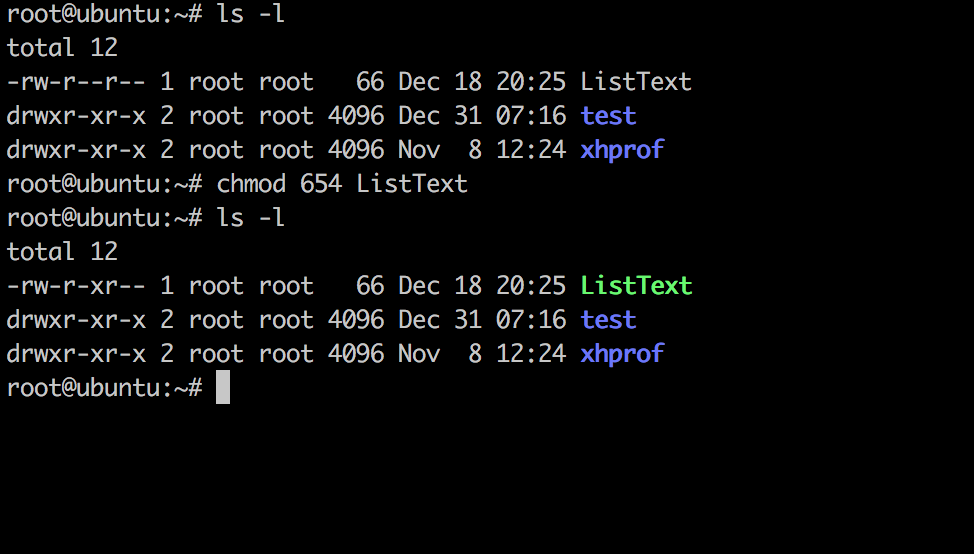



Linux Chmod Command Linuxfordevices




How To Use Chmod Command In Unix And Linux Unix Command Tutorial 2 Youtube




Understanding Unix Permissions And File Types Unix Linux Stack Exchange
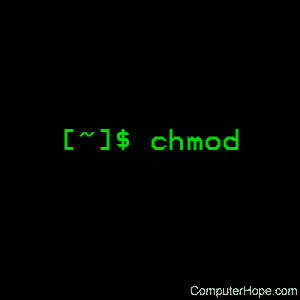



Linux Chmod Command Help And Examples




Chmod File Permissions In Linux Unix Linux Angular Angular Js Jquery Php Mysql And Web Development Tutorials




Bash Shell Test If A File Is Writable Or Not Nixcraft




Linux Unix Permissions And Attributes Linuxsecrets
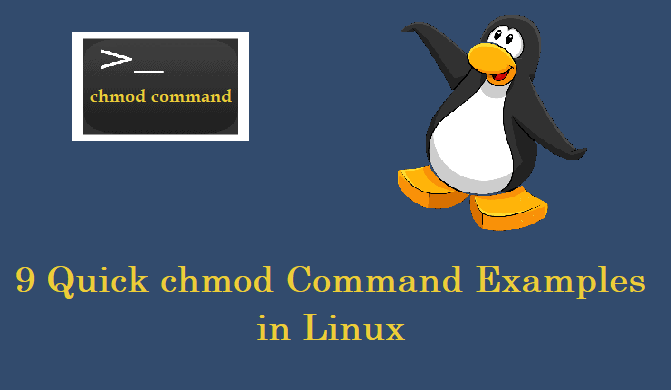



9 Quick Chmod Command Examples In Linux




Chmod 600




Modify File Permissions With Chmod Linode
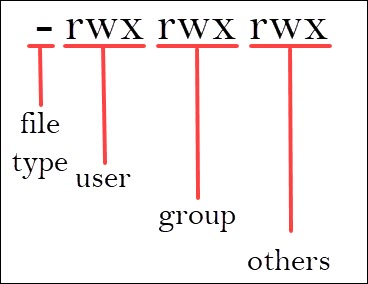



Linux File Permissions Tutorial How To View And Change Permission




Linux Unix Permissions And Chmod Youtube
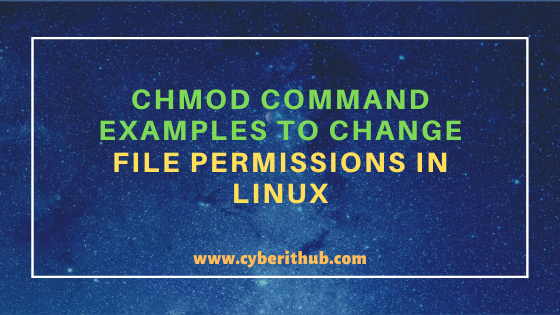



11 Popular Unix Linux Chmod Command Examples To Change File Permissions Cyberithub




Linux Chmod Command Linuxfordevices




File Permissions In Linux Unix How To Read Write Change




File Permissions In Linux Unix Vk9 Security



Linux Chmod Tips




9 Quick Chmod Command Examples In Linux




How To Use The Chmod Command On Linux
/i7guGwCYcn-34e068e148ae4e918b29c86cd2d5740e.png)



Configuring Unix Linux File And Directory Access Rights




File Permission Meanings Stack Overflow



Extropia Tutorials Introduction To Unix For Web Technicians The Chmod Utility




Your Own Linux Chmod Basics Of Files Directories Permissions And Use Of Chmod



How To Chmod Files Only On Linux
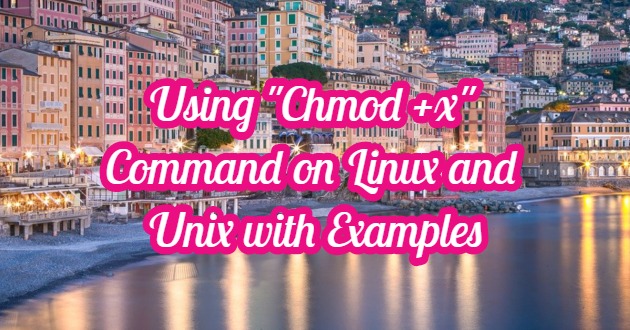



Using Chmod X Command On Linux And Unix With Examples Systemconf




How To Run A Script In Linux Nixcraft




How To Use Chmod And Chown Command In Linux Nixcraft
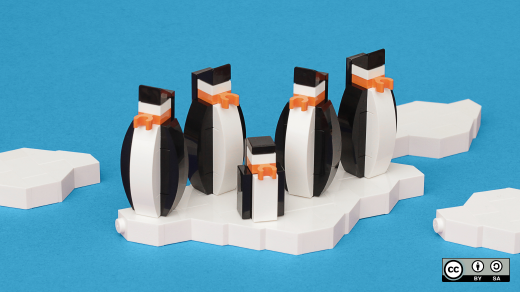



Introduction To The Linux Chmod Command Opensource Com




Chmod Command In Linux File Permissions Linuxize
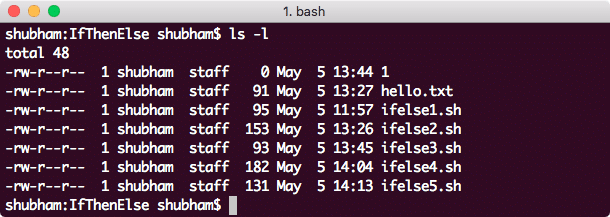



Linux Chmod Example



How To Use Unix File Permissions To Increase Security Developer Drive




Chmod Wikipedia




Chmod Wiki Ask Ubuntu




Understanding File Permissions




Linux Permissions Posix Chmod Chown Chgrp Youtube
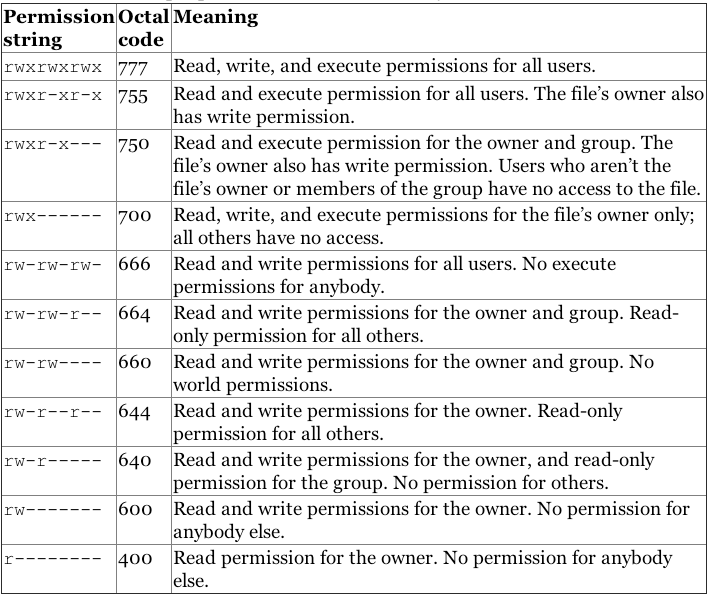



Linux Users And Groups Linode




Explained How To Use Chmod Command Complete Guide Youtube




Unix File Permissions Computer Science




Linux File Permissions And Chmod Doug Vitale Tech Blog




Linux File Permission Javatpoint




Chmod Command File Permissions Unix Linux Shell Scripting Programming Change Mode Youtube
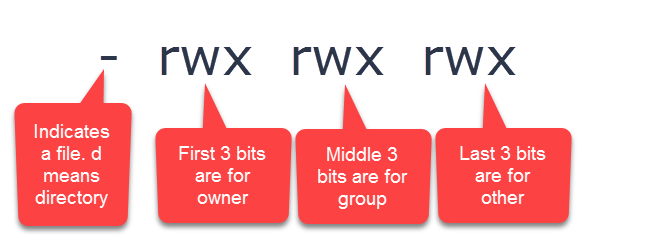



Understanding Linux Permissions And Chmod Usage



0 件のコメント:
コメントを投稿